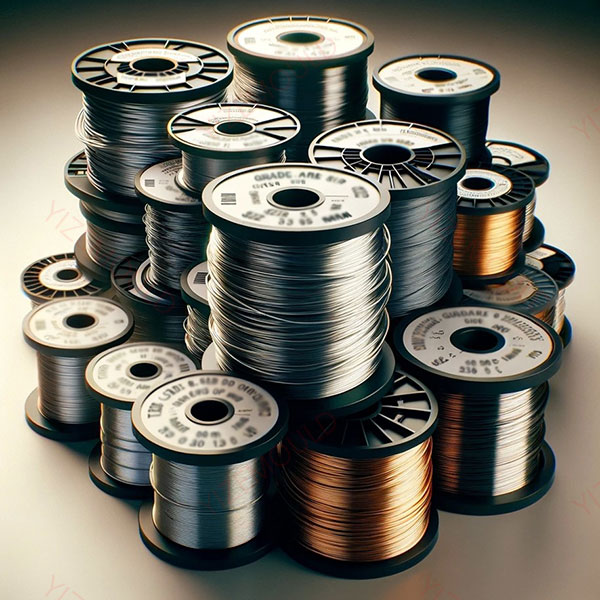What is edm wire made of?
The EDM wire comes in various materials, such as copper electrode wire, molybdenum electrode wire, copper-nickel alloy, iron, and carbide electrode wire. Depending on different production needs, different electrode wires […]
The EDM wire comes in various materials, such as copper electrode wire, molybdenum electrode wire, copper-nickel alloy, iron, and carbide electrode wire. Depending on different production needs, different electrode wires are selected to meet the product quality requirements and economic efficiency of production machining. Wire EDM (Electrical Discharge Machining) is a crucial technology in modern manufacturing, particularly valuable in mold making and precision metal processing. The choice of electrode wire is fundamental to the efficiency and quality of the EDM process. This article explores the different materials used for electrode wires in wire EDM machines, outlining their characteristics, advantages, and disadvantages.
Common Electrode Wire Materials
1. Copper Electrode Wire
Our factory business: We design, develop and produce powder metallurgy moulds, carbide parts, powder injection moulds, stamping toolings and precision mould parts. Whatsapp:+8618638951317. Email: [email protected],
- Advantages: Excellent electrical and thermal conductivity, which makes it suitable for processing high-hardness materials. Copper maintains strong cutting performance even at elevated temperatures.
- Disadvantages: The higher cost of copper can be a limiting factor in its application.
2. Molybdenum Electrode Wire
- Advantages: Known for its high hardness and wear resistance, molybdenum wire is ideal for precision machining that requires high accuracy. It significantly enhances cutting precision and surface quality.
- Disadvantages: The cost of molybdenum wire is relatively high, which may affect its affordability for some projects.
3. Copper-Nickel Alloy Electrode Wire
- Advantages: Exhibits good wear resistance and is effective for cutting both thin plates and thicker hard materials. It offers fast cutting speeds and high-quality results.
- Disadvantages: As a relatively new material, it may face limitations in specific applications that are not yet fully understood.
4. Iron Electrode Wire
- Advantages: Robust and durable, with reduced vibration during cutting.
- Disadvantages: Poor electrical and thermal conductivity makes it less suitable for high-hardness materials.
5. Carbide Electrode Wire
- Advantages: Features high hardness and excellent wear resistance, leading to fast cutting speeds and high-quality finishes.
- Disadvantages: Like copper and molybdenum, the higher cost restricts its widespread usage.
Wire Types for Different Cutting Speeds

Fast Wire Cutting
- Material: Typically utilizes molybdenum wire due to its cost-effectiveness.
- Application: Best suited for jobs that require lower precision and moderate surface roughness.
Medium Wire Cutting
- Material: Commonly employs brass wire, which offers a good balance between cost and performance.
- Application: Appropriate for general precision requirements and standard surface quality.
Slow Wire Cutting
- Material: Often uses disposable copper wire, which, while more expensive, provides superior cutting precision and surface quality.
- Application: Ideal for tasks that demand high precision and excellent surface finishes.
Summary
The selection of electrode wire significantly influences the outcomes of wire EDM cutting. Each material brings unique benefits and challenges, affecting the overall efficiency, quality, and cost of the EDM process. Understanding the properties of each wire type helps in making informed decisions tailored to specific machining requirements.
Invitation for Community Engagement
Do you have insights or experiences with different electrode wires in wire EDM machines? Your expertise could be invaluable to others in the field. Please share your thoughts or suggestions in the comments below, and let’s enrich our understanding together!

